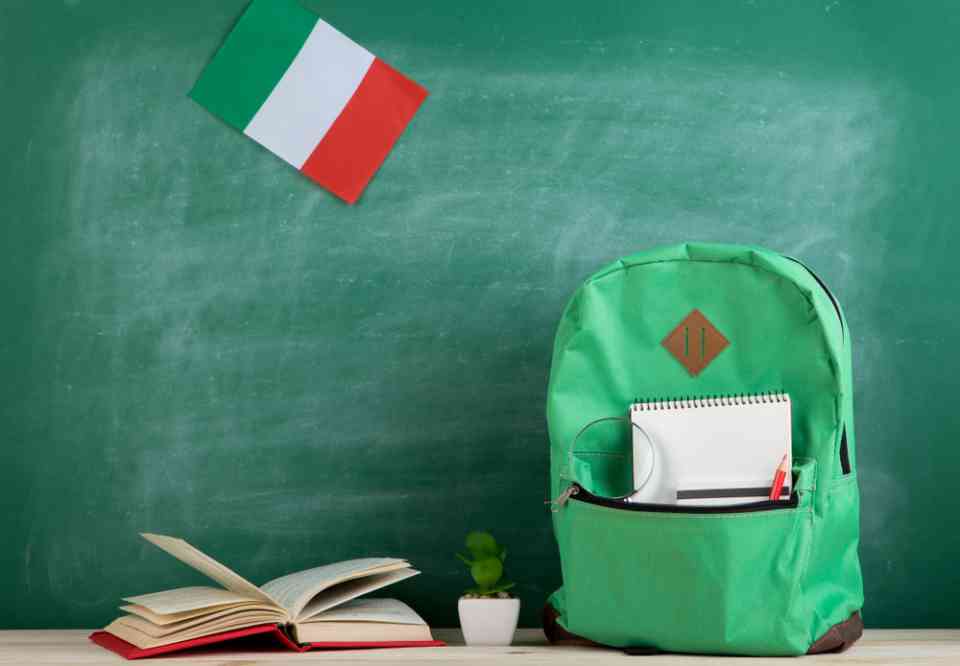5 Things You Should Know About the Italian School System

Education is a strong suit of Italy. The Italian education system has been structured and implemented in a way to sustain and improve the high literacy rate and encourage positive development of the students overall. Facts show that the government spends as much as 9 percent of the total budget on education, of which a sizeable chunk is directed to secondary education.
Many expats join the big, vibrant Italian community. They want to send their children to the best available schools. But, coming from a different country, especially a non-EU country, could create a lot of confusion. This is particularly important when your children are very young and would relatively struggle more if they cannot comprehend the system.
Readers should note that a special reference to elementary school education has been given here.
Here are a few things to know about the Italian school system.
- Five Stages
You need to know that all residents of the country, irrespective of their nationalities, are mandated to send their children to school. All children falling between the ages of 6 and 16 must attend school. And they will be admitted to any of the following stages.
In a typical school in Italy, a child goes through the following stages.
-
-
- The first stage is called Asilo, which is for children before age six and is not compulsory. It is the kindergarten of the Italian school system.
- The second stage is scuola elementare, which, as the name suggests, is the elementary school. The school spans five years.
- The third stage is scuola secondariaand is divided into 2 phases for a total duration of 8 years. Now, this particular stage is an umbrella stage comprising two phases.
-
- Scuola secondaria di primo gradois the American equivalent of Middle School and lasts for three years.
- Following these three years, the child moves to Scuola secondaria di secondo grado, the American equivalent of High School. This phase lasts for five years, i.e. until the age of 19.
-
-
- The Enrollment Period
Okay, the enrollment period may not be uniform and depends on the school. Generally, the registration process, called Iscrizione, starts in January and runs through February. However, as noted above, you should also confirm these details from the school’s office.
You don’t have to worry about the place of residence. Parents can send their children to any school of their preference as long as there is a seat available in the selected schools. Note, however, schools generally give preference to applicants who live in and around the school’s location. - Elementary School in Italy
Elementary school education in Italy is characterized by a well-blended curriculum embodying mostly theoretical lessons. These lessons are aimed at honing the base knowledge for these children to apply in practical situations.
Students will spend a total of 5 years in school and move to secondary school after the age of 11. Throughout these years, the focus has been on foundational academics, which comprise subjects such as English, math, history, music, physical education, geography, and science. There may be additional subjects in private schools, especially international schools. - Basic student kit
Your child will have to take along a few things every day as a student.
-
-
- Before anything else, let us exclude uniforms from this discussion. In Italian schools, uniforms are not mandatory. There is usually a uniform for kindergartens and elementary schools. After graduating from these, there is no uniform, and children can wear whatever they wish.
- A school bag has to be carried to the school. Italian academics can be cumbersome at times, making children shoulder heavy bags. It is advised that you get them trolley school bags.
- Textbooks may or may not be refundable because the system keeps changing. All the textbooks should be booked in early summer to have them delivered by September.
- The ‘diario’ or the school planner is where you write down the homework. They have to be compulsorily taken to school.
-
- The timings
Most schools in Italy start at 8:00 AM and from Monday to Saturday. They last for 5 hours. During lunch, students usually come back home because there are no canteens in most schools here. Exceptions are there when there are afternoon activities.
The regular schedule of a typical Italian school involves five periods. These periods run from Mondays to Saturdays, but lately, schools have been introducing shorter school days, ending on Fridays. However, in such cases, the number of school hours per day increases.
Have you read?
Sean Rakidzich Shares His Own Strategies to Help Those in the Short-Term Rental Business.
Continuous Operational Excellence Is the Key to Sustainability by Kumar Vijayendra.
Vuslat Doğan Sabancı: Generous Listening is the missing piece for living and flourishing together.
The Cleantech Revolution is Finally Here by Dr. Joe Zammit-Lucia.
Embracing the Metaverse: How Brands are Navigating the Future of Marketing by Vitaly Gerko.
Bring the best of the CEOWORLD magazine's global journalism to audiences in the United States and around the world. - Add CEOWORLD magazine to your Google News feed.
Follow CEOWORLD magazine headlines on: Google News, LinkedIn, Twitter, and Facebook.
Copyright 2025 The CEOWORLD magazine. All rights reserved. This material (and any extract from it) must not be copied, redistributed or placed on any website, without CEOWORLD magazine' prior written consent. For media queries, please contact: info@ceoworld.biz








